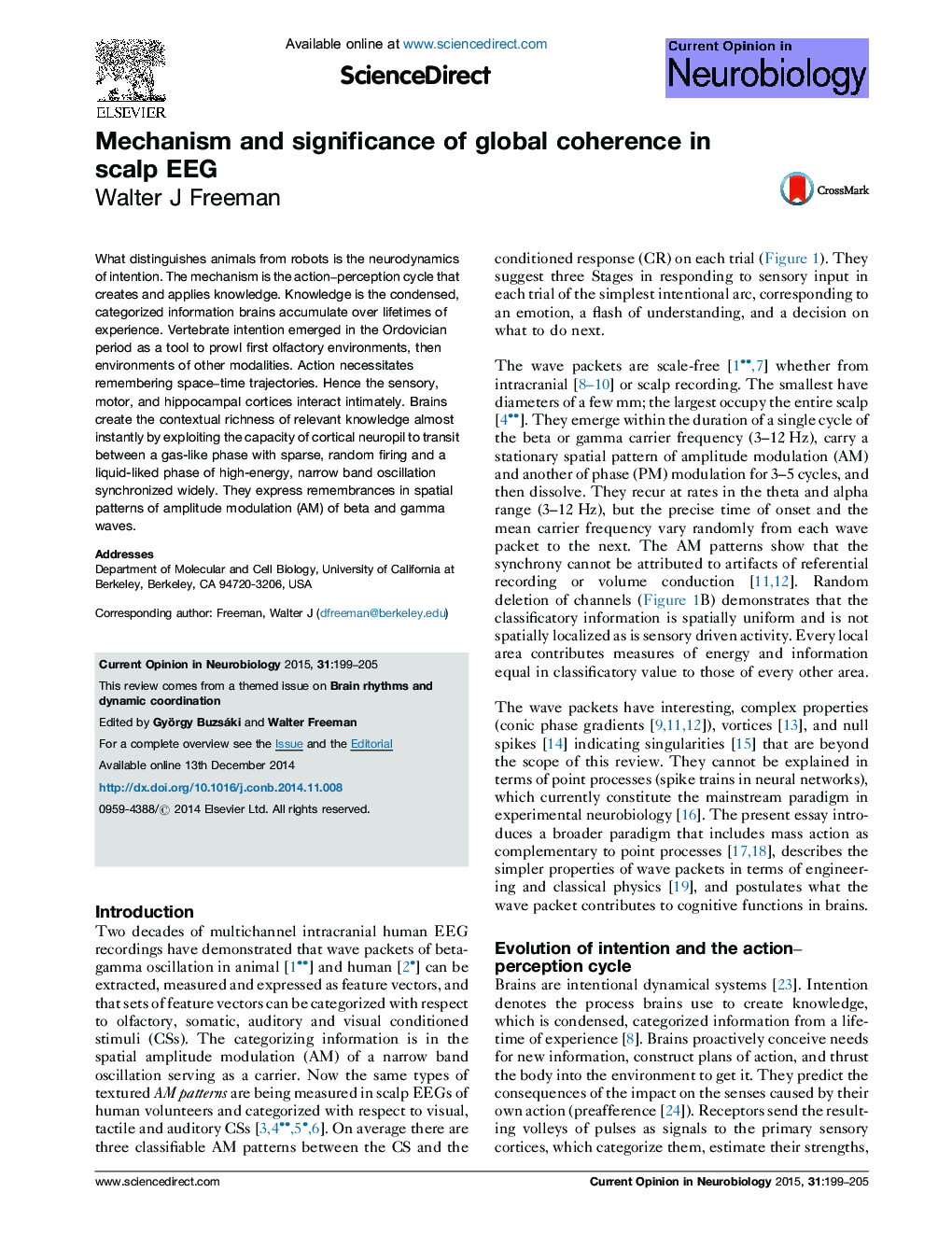| Article ID | Journal | Published Year | Pages | File Type |
|---|---|---|---|---|
| 6266263 | Current Opinion in Neurobiology | 2015 | 7 Pages |
â¢Olfaction provided the prototype for generalization and perception in intentional neurodynamics.â¢Neuropil is bistable: a gas-like receiving phase, a liquid-like transmitting phase.â¢EEG AM patterns manifest stimulus-triggered rich remembrances, not representations.â¢A spatial integral transform extracts the percepts from the sensory background.â¢Every memory should contain where and when the action was that created it.
What distinguishes animals from robots is the neurodynamics of intention. The mechanism is the action-perception cycle that creates and applies knowledge. Knowledge is the condensed, categorized information brains accumulate over lifetimes of experience. Vertebrate intention emerged in the Ordovician period as a tool to prowl first olfactory environments, then environments of other modalities. Action necessitates remembering space-time trajectories. Hence the sensory, motor, and hippocampal cortices interact intimately. Brains create the contextual richness of relevant knowledge almost instantly by exploiting the capacity of cortical neuropil to transit between a gas-like phase with sparse, random firing and a liquid-liked phase of high-energy, narrow band oscillation synchronized widely. They express remembrances in spatial patterns of amplitude modulation (AM) of beta and gamma waves.
